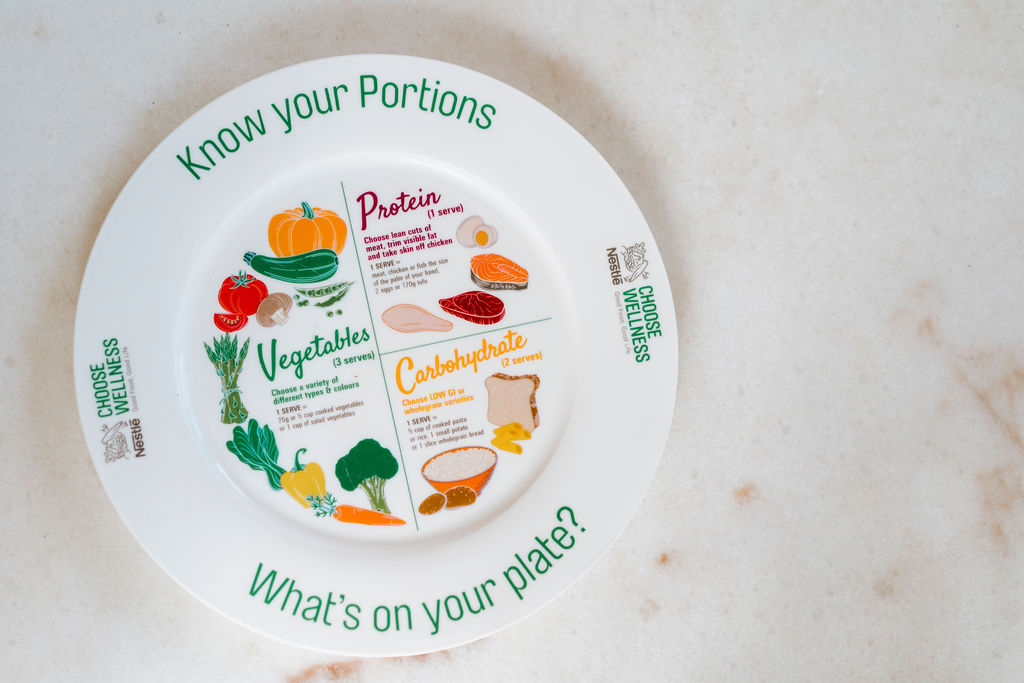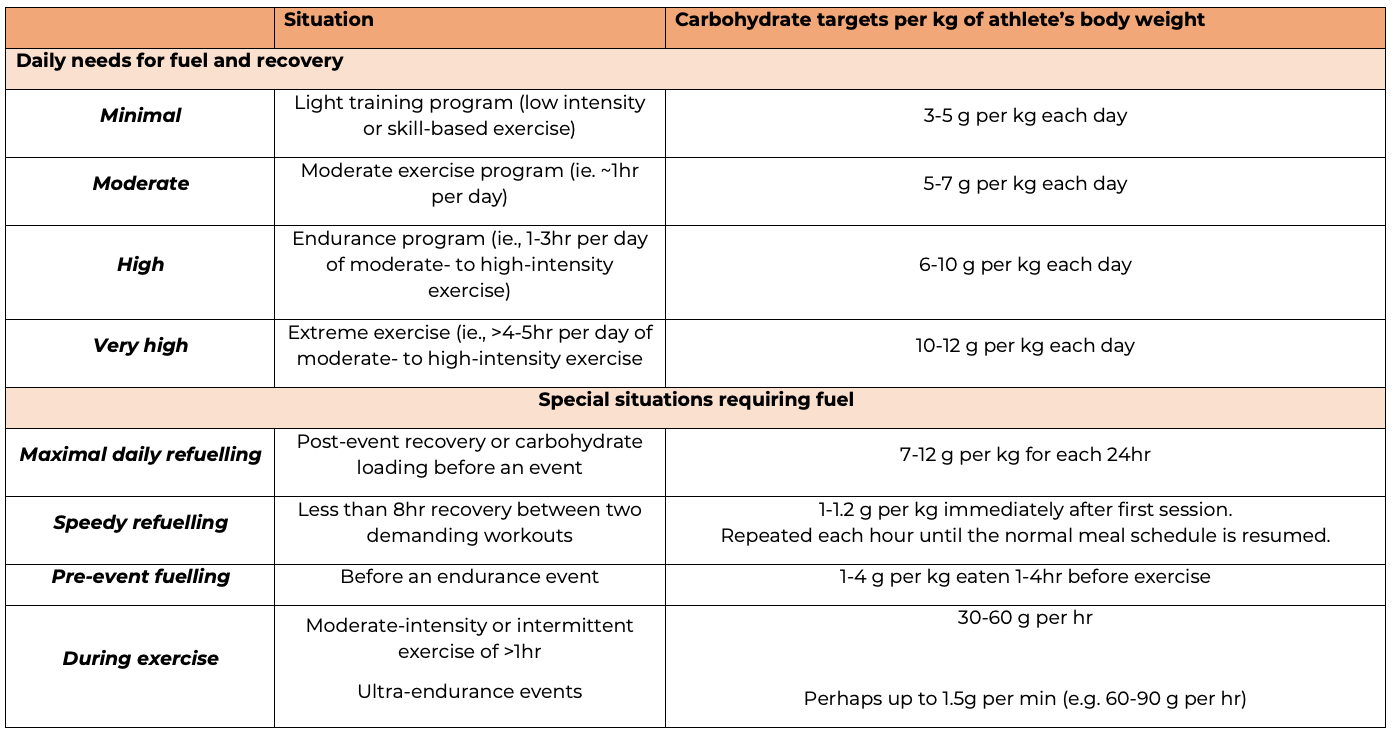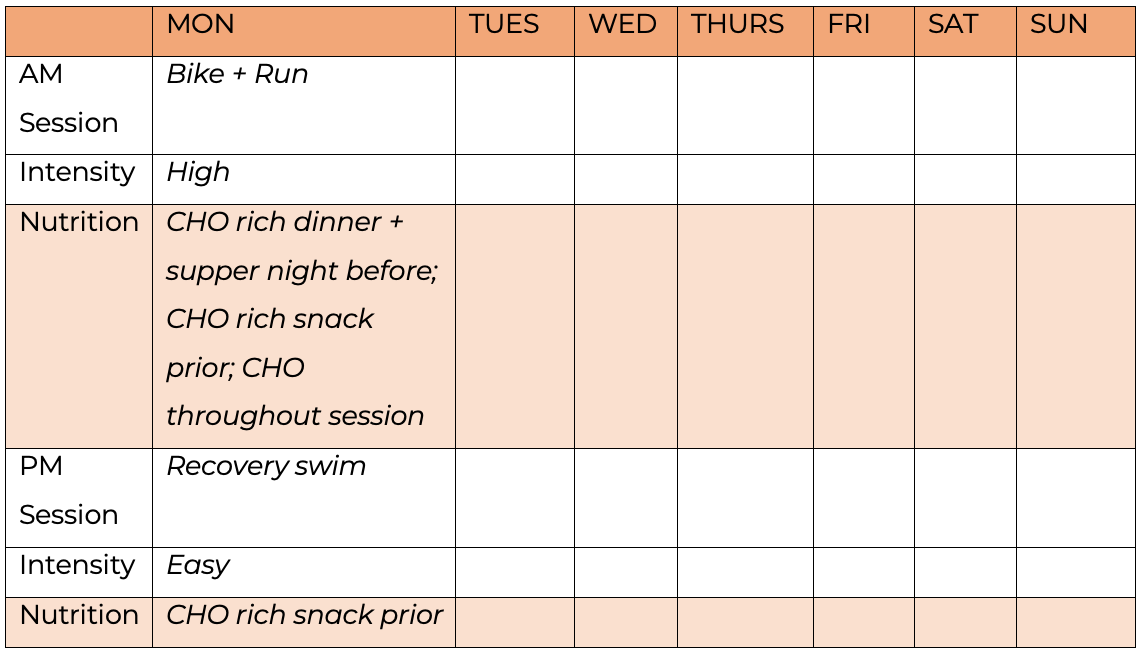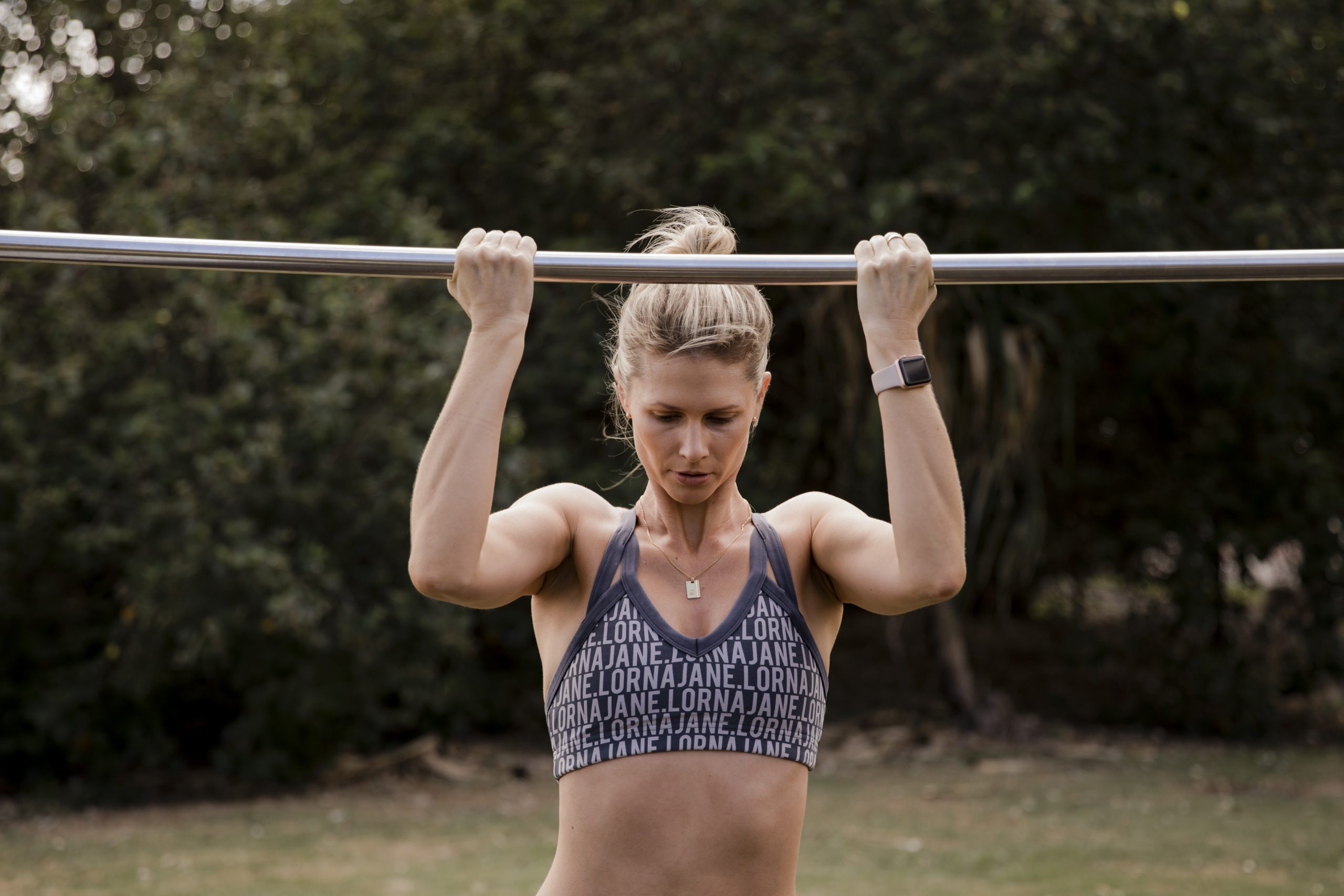Caffeine for Performance What is caffeine? Caffeine is the most widely consumed psychoactive substance, and…
Carbohydrate Periodisation
You may have heard your coach or teammates talking about periodised training. Often this refers to the structure of your training program and how it is broken down into smaller cycles that have different focuses, in order to enhance training adaptations. Periodisation can also be applied to your nutrition! This involves manipulating your energy intake, particularly your carbohydrate intake, depending on your training goals & training intensity. Manipulation of carbohydrate intake can be done in many different ways, and many new theories have been emerging recently. This blog will focus on periodising carbohydrate intake to support quality training sessions and promote improved performance.
What are the benefits of extra CHO around quality sessions?
Carbohydrates are the main energy source utilised by the body to provide fuel to our working muscles during exercise. Carbohydrate is broken down into basic sugars (glucose) in the body, and stored in the working muscles as glycogen, which is later used as energy during high-intensity exercise. By increasing carbohydrate intake around quality training sessions, it increases the carbohydrate available to be used as fuel. This allows us to exercise for a longer period of time before experiencing muscular fatigue. Increasing carbohydrate intake to support quality sessions can be done through several strategies, including increasing carbohydrate intake in the pre-training meal and snack, utilising carbohydrates strategically throughout the training session, and replacing carbohydrates quickly post-training to restore muscle glycogen levels.
Step by step guide to carbohydrate periodisation:
Carbohydrate periodisation is a targeted approach, and can be thought of as a sliding scale. The idea is to find your baseline carbohydrate intake for an easy training day/rest day, and scale up/down carbohydrate intake throughout the week, reflective of the intensity of training. Carbohydrate requirements are dependent upon how much fuel your muscles need – see the table below for a guide.

Have a look at the steps below to see how you can support your training sessions with carbohydrates!
- Map out your training week. Fill out what sessions you have in the week, including both AM and PM sessions. Try the template below!
- Highlight quality sessions. Label each training session as high-intensity, medium, low-intensity or rest day!
- Highlight the quality sessions that you want to increase your carbohydrate intake around. Make sure you have a plan for how you are going to achieve this!
- Make note of the easier training session days. On these days you can taper down your carbohydrate intake.
- Trial it! It might take some time to work out the best plan for you and get your body used to increased carbohydrates around training. Have a play around to see what works best, and book in to see an accredited sports dietitian for some help!

Ways to increase carbohydrate intake around quality sessions:
- Aim for half a plate of good quality complex carbohydrates in the meal 3-4hr prior to the quality session

- Foods such as pasta, rice, noodles, wholegrain breads and cereals, lentils & legumes, starchy veg, rice cakes & rice crackers
- If you are completing a quality session early in the morning & are unable to have a meal before, ensure you have a carbohydrate rich dinner & carbohydrate-based supper snack the night before
- Top up muscle glycogen stores with a pre-training snack consisting of simple carbohydrates
- Choose foods such as fresh or dried fruit, fruit juice, flavoured milks, yoghurts, high GI toppings like jam or honey on white bread/wraps/rice cakes, sports drinks, sports gels, lollies, muesli bars
- Have simple, high GI carbohydrates on hand for during your training session
- Have options on standby such as sports drinks, gels, lollies, bananas, muesli bars
- Refuel soon after completing the session. This is especially important if it’s going to be a while before your next carbohydrate rich meal.
- Include some protein as well!
- Choose foods such as flavoured milks, Sustagen sport, yoghurt & muesli, cereal & milk, meat & cheese sandwich, low-fat fruit muffin, fruit smoothies
References
Bompa, & Buzzichelli, C. (2018). Periodization : theory and methodology of training (6th ed.). Human Kinetics.
Burke, & Cox, G. (2010). The Complete Guide to Food for Sports Performance : Peak Nutrition for Your Sport (3rd ed.). Allen & Unwin.
Hawley, & Burke, L. M. (2010). Carbohydrate availability and training adaptation: effects on cell metabolism. Exercise and Sport Sciences Reviews, 38(4), 152–160. https://doi.org/10.1097/JES.0b013e3181f44dd9
Jeukendrup. (2017). Periodized Nutrition for Athletes. Sports Medicine (Auckland), 47(Suppl 1), 51–63. https://doi.org/10.1007/s40279-017-0694-2
Marquet, Hausswirth, C., Molle, O., Hawley, J. A., Burke, L. M., Tiollier, E., & Brisswalter, J. (2016). Periodization of Carbohydrate Intake: Short-Term Effect on Performance. Nutrients, 8(12), 755–. https://doi.org/10.3390/nu8120755



